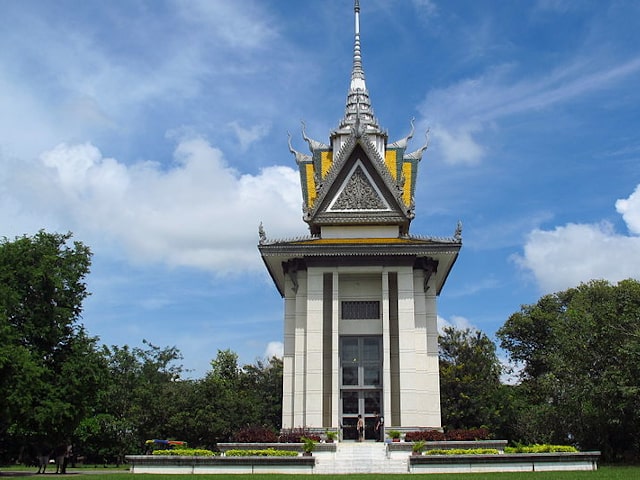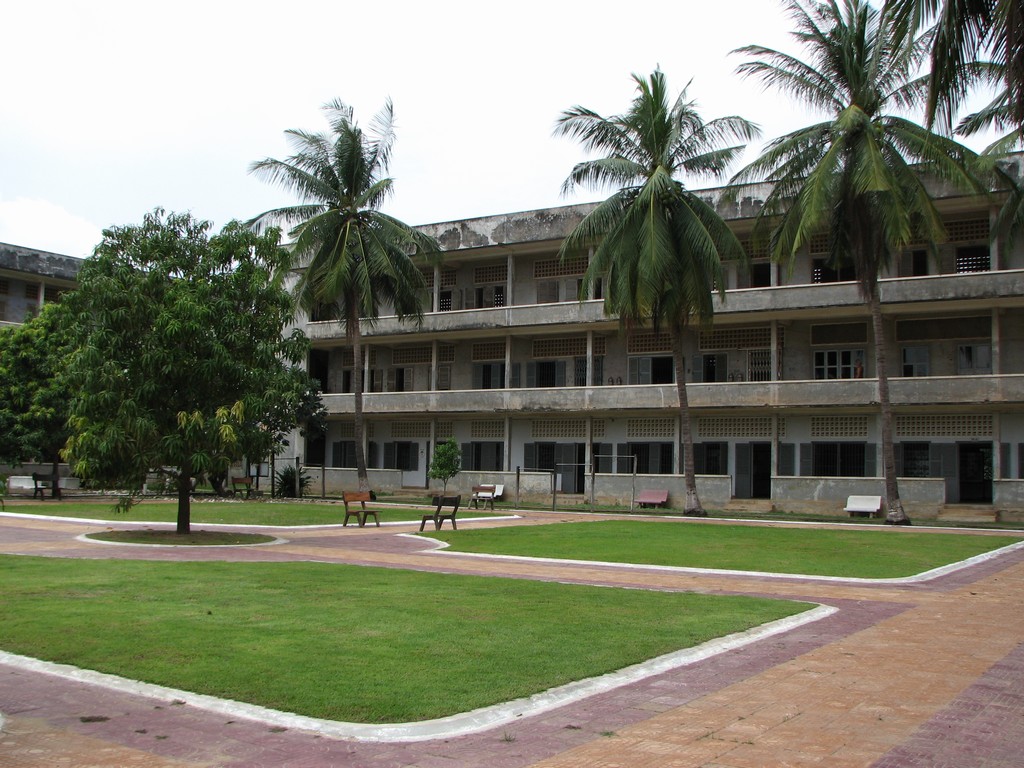Visiting these tourism destinations that display the dark side of Cambodia's history will make you feel touched, admire the spirit of the Cambodian people, and will feel appalled at the cruelty of the genocidal regime. Check out 2 destinations here!
TABLE OF CONTENTS
1
1. Choeung Ek Genocidal Center (The Killing Field)
2
2. Tuol Sleng (S21 Prison)
The war is over for nearly half a century, but the evidence denouncing its cruelty is still there. The magnificent capital of Phnom Penh today used to be the ground zero off the country’s dark past when the Khmer Rouge regime led by Pol Pot carried out the most devastating genocide in current history in 1975. It’s estimated that up to three million Khmers have been killed in this macabre ethnic cleansing. That’s almost one-fourth of the entire population at the time.
Visiting these destinations that display the dark side of Cambodia's history will make you feel touched, admire the spirit of the Cambodian people, and will feel appalled at the cruelty of the genocidal regime.
Check out 2 destinations that display the dark side of Cambodian history in Phnom Penh
1. Choeung Ek Genocidal Center (The Killing Field)
Located 14,5 km from the south of Phnom Penh, Choeung Ek (or The Killing Fields) is a former orchard that had been converted into an extermination camp at the height of the Khmer Rouge rule. Here thousands of prisoners were murdered by barbaric means by Khmer Rouge soldiers.

Memorial site for ill-fated victims
The center of the memorial site is a large stupa, full of the skulls and bones of over 8000 victims found in the surrounding mass graves. You can go inside the stupa, laying flowers, and placing an incense stick in a pot of sand provided as a gesture of Buddhist respect. You must take your shoes (and hats) off for the same reason. Inside you can watch the skulls up close. Some even mark traces of cruel tortures with knives, axes, and logs, because you will see broken lines, grooves running along, across the skull. This was a cruel method of killing that Pol Pot used to save bullets, not wanting to waste too much on slaughtering people.
8000 skulls inside the memorial site
Behind the memorial stupa lie the mass graves. You can see the depressions in the ground in what is otherwise a grassy field with a few trees. Some of the mass grave hollows are protected by bamboo roofs, others lie exposed. Tourists are warned to go gently. Because under that layer there may still be the remains of the ill-fated victims. During the rainy season, white bones are still washed away by the soil and exposed to the outside.
At Choeung Ek, visitors will come across many signs around the circuit of the grounds. These explain where victims would have arrived, what types of mass graves were found (e.g. one containing only women, presumably raped – another one with corpses without heads, and so on).
Killing tree against which executioners beat children

One tree is marked as the one used to beat children against, in which many children were killed in front of their mother's eyes. Another tree is known as The Magic Tree which is the bodhi tree where the Buddha meditates to enlightenment in the legend. The Khmer Rouge army used the Magic Tree to hang loudspeakers. During the day, the loudspeaker plays music to urge the victims to work hard in the fields. At night, the strange music sounds drown out the screams of the victims.
The Magic Tree
There are also a few photos of victims and of the killing fields as they looked when they were discovered together with short explanations. Even though the green was covered all over the field, the pain was still smoldering, the souls still writhing with the inconceivable pain.
You also like: Cambodia holiday packages With Your Family
2. Tuol Sleng (S21 Prison)
In the heart of the capital Phnom Penh, Cambodia has a hell set up by the Khmer Rouge to implement the most barbaric policy. Thousands of people were brutally killed in this prison. Tuol Sleng (S21 Prison) was a former Khmer Rouge "security prison", a site where the cruelty of Pol Pot's regime is most graphically documented. Conjunction with The notorious Killing Field, S21 Prison is one of the world's top dark tourism destinations.
Entrance gate
%20(1).png)
You enter the museum through a gate marked "Tuolsleng genocide museum" – with barbed wire along the walls. To the left of the reception/ticket booth is an open courtyard area in which the first stop along the circuit is a series of tombs made of white concrete without gravestones. These are the tombs of the last victims – found tortured to death when the prison was finally liberated by the invading Vietnamese. Behind the graves, you can already see the prison's gallows.

This place used to be a school before it became "hell". The classrooms were the cells of those which surprisingly spacious and containing just one single iron bed-frame (just the metal grill, no mattress, or anything). This is the famous and featured image of Tuol Sleng that is regularly given as an illustration.
Single iron bed–frame

The bed was very simple, woven steel mesh, with a shackles key and a barrel of machine gun ammunition next to it, presumably for torture tools. On the walls, there is a large black-and-white photograph taken by Vietnamese liberators. This is the already decaying mutilated corpses of those last victims, strapped to their "beds", large puddles of blood underneath on the tiled floor. Here, it's beginning to get really ghastly.
Back outside you pass through the gallows and a few large pots, also used for torture.

Inside the next building, the central one of the three main parts of the complex is the photographs of the inmates when they arrived at the prison. Astonishingly, the Khmer Rouge perpetrators detail documented their doings which helped in the later analysis of the crimes and the tribunals. Every prisoner has photographed several times and transcripts of interrogations were kept and filed away.
Some of the victims' photos are truly shocking. Eg that of a boy about seven or eight, a weary, part hollow, part terrified expression on his face. Or that of a mother held a small baby in her arms – while being photographed for the prison's records just before her baby was to be killed. There's also a photo of one of the few foreigners who passed through S-21. Even the corpses of torture victims were photographed.
When you come to Cambodia, in addition to the natural sights or magnificent temples, you should also take the time to visit the historic site reflecting the dark side of Cambodia to make sense of traumatic Cambodian history.
READ MORE:
1. 10 MUST TRY local street food in your best holiday to Cambodia
2. Cambodia Entry Requirements in 2022
3. Everything you need to know before taking a trip to Cambodia










